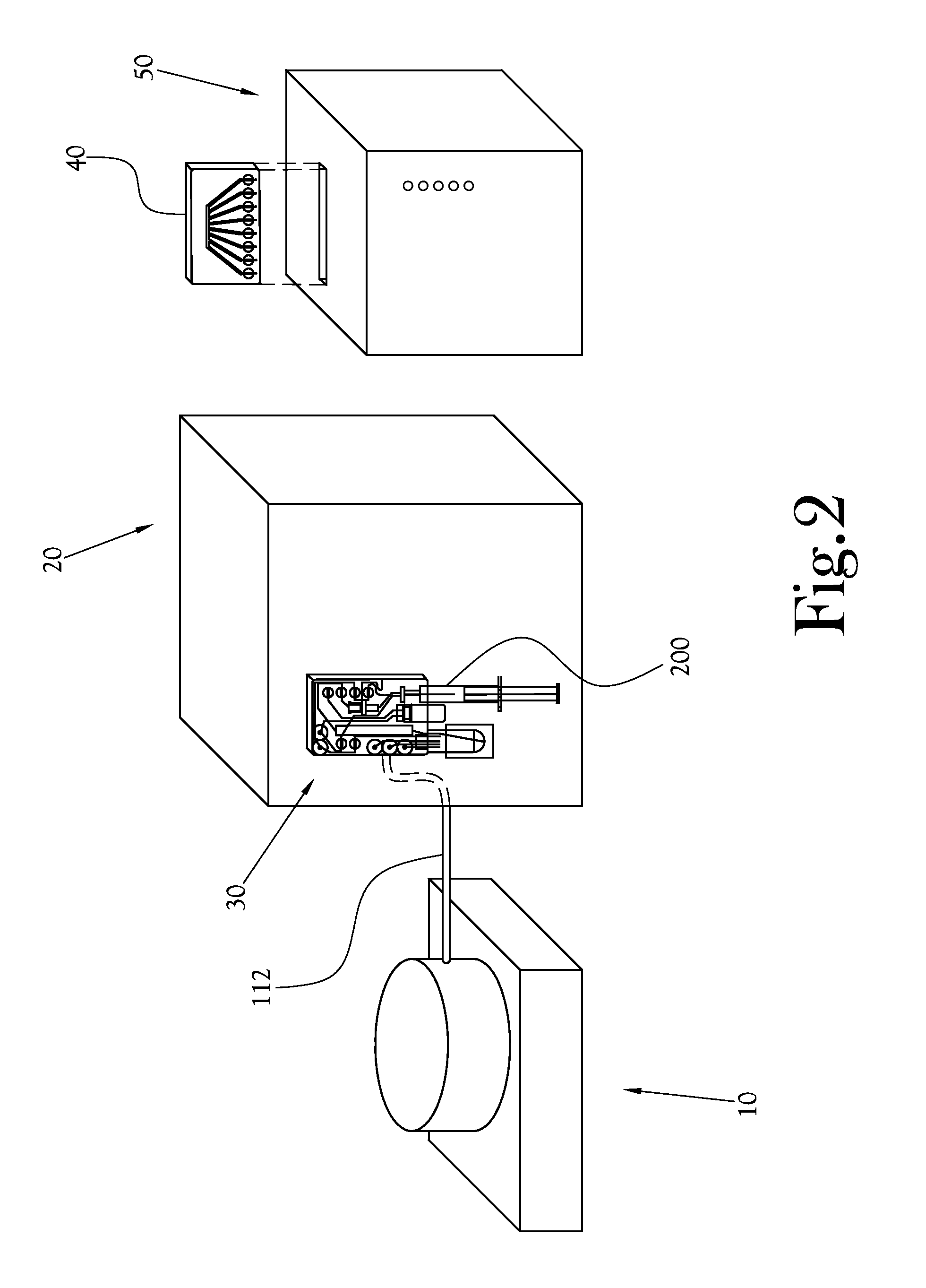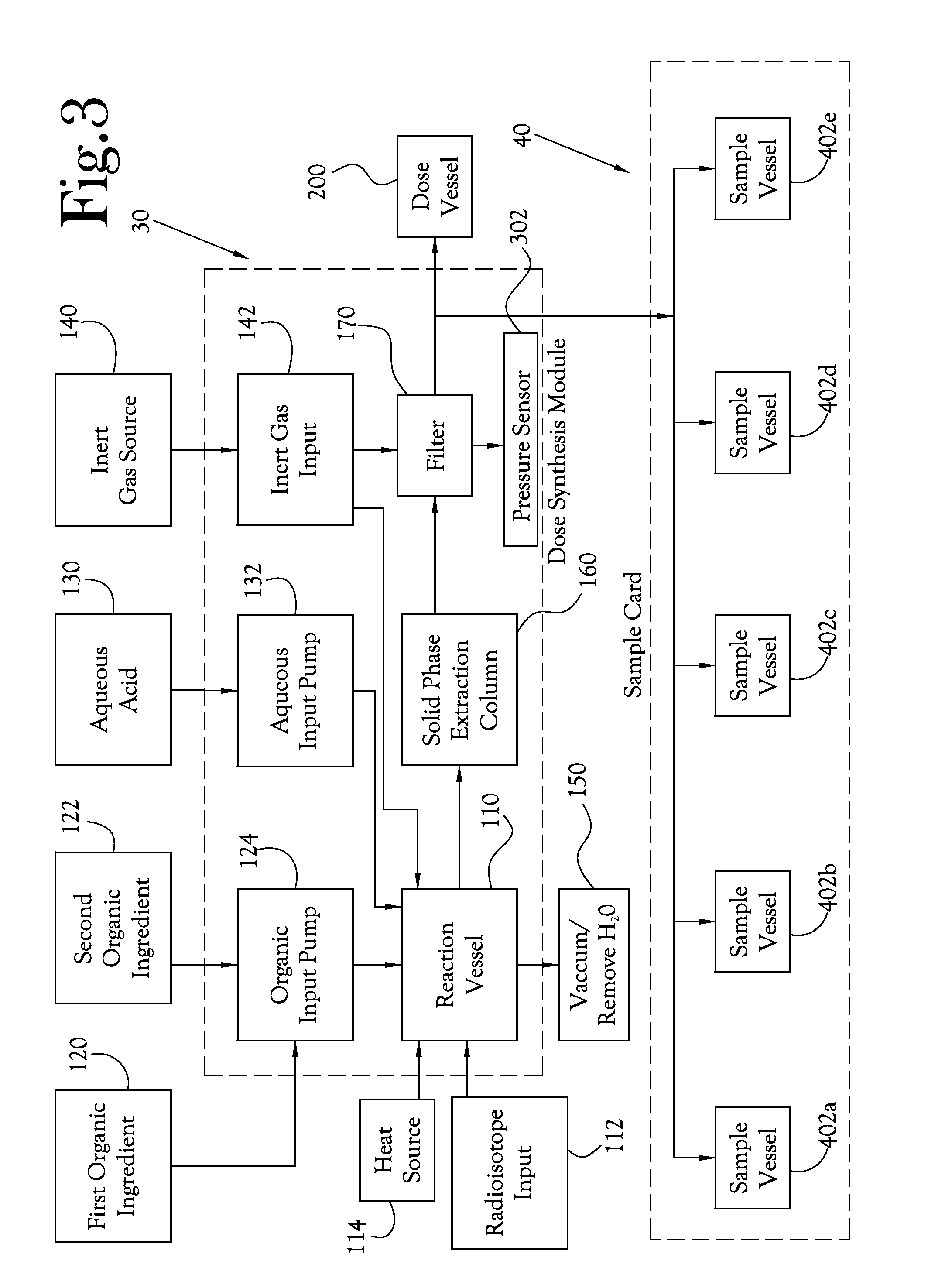Dose Synthesis Card for Use with Automated Biomarker Production System
a biomarker and automated technology, applied in the direction of nuclear elements, radiation engineering, therapy, etc., can solve the problems of insufficient traditional 45 to 60 minutes required for quality control tests on radiopharmaceuticals produced in macro-scale, and the need for eliminating or significantly reducing the transportation phase cannot be eliminated, so as to achieve significant more efficient, reduce the effect of transportation time and increase the yield
- Summary
- Abstract
- Description
- Claims
- Application Information
AI Technical Summary
Benefits of technology
Problems solved by technology
Method used
Image
Examples
Embodiment Construction
[0045]A chemical production module and dose synthesis card for a PET biomarker radiopharmaceutical production system are described more fully hereinafter. This invention may, however, be embodied in many different forms and should not be construed as limited to the embodiments set forth herein. Rather, these embodiments are provided to ensure that this disclosure is thorough and complete, and to ensure that it fully conveys the scope of the invention to those skilled in the art.
[0046]The chemical production module, the dose synthesis card and the sample card operate in conjunction with a complete PET biomarker production system. As shown in FIG. 1, one embodiment of this PET biomarker production system comprises an accelerator 10, which produces the radioisotopes; a chemical production module (or CPM) 20; a dose synthesis card 30; a sample card 40; and a quality control module (or QCM) 50. Once the accelerator 10 has produced a radioisotope, the radioisotope travels via a radioisoto...
PUM
| Property | Measurement | Unit |
|---|---|---|
| diameter | aaaaa | aaaaa |
| pressures | aaaaa | aaaaa |
| energy | aaaaa | aaaaa |
Abstract
Description
Claims
Application Information
 Login to View More
Login to View More - R&D
- Intellectual Property
- Life Sciences
- Materials
- Tech Scout
- Unparalleled Data Quality
- Higher Quality Content
- 60% Fewer Hallucinations
Browse by: Latest US Patents, China's latest patents, Technical Efficacy Thesaurus, Application Domain, Technology Topic, Popular Technical Reports.
© 2025 PatSnap. All rights reserved.Legal|Privacy policy|Modern Slavery Act Transparency Statement|Sitemap|About US| Contact US: help@patsnap.com



